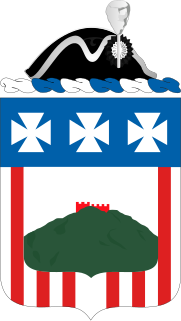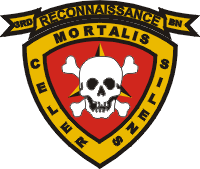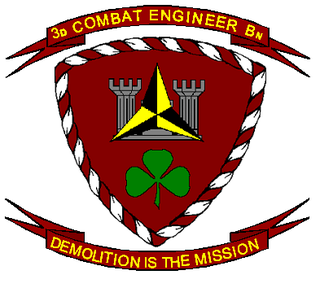
The Battle of Ia Drang was the first major battle between the United States Army and the People's Army of Vietnam (PAVN), also referred to as the North Vietnamese Army (NVA), and was part of the Pleiku Campaign conducted early in the Vietnam War. It comprised two main engagements, centered on two previously scouted helicopter landing zones (LZs), known as LZ X-Ray and LZ Albany. The first involved the 1st Battalion, 7th Cavalry Regiment and supporting units under the command of Lieutenant Colonel Hal Moore, and took place November 14–16, 1965 at LZ X-Ray, located at the eastern foot of the Chu Pong Massif in the central highlands of Vietnam. The second engagement involved the 2nd Battalion, 7th Cavalry Regiment plus supporting units under the command of Lieutenant Colonel Robert McDade, and took place on November 17 at LZ Albany, farther north in the Ia Drang Valley. It is notable for being the first large scale helicopter air assault and also the first use of Boeing B-52 Stratofortress strategic bombers in a tactical support role. Surrounded and under heavy fire from a numerically superior force, the American forces at LZ X-ray were able to hold off and drive back the North Vietnamese forces over three days of battle, largely through the support of both air power and heavy artillery bombardment, which the North Vietnamese lacked. LZ X-ray was considered an American tactical victory, as the Americans were able to exact an almost 10:1 kill ratio. At LZ Albany, the American forces were ambushed in close quarters. They were unable to use air and artillery support due to the close engagement of the North Vietnamese, the American forces were badly defeated, suffering an over-50% casualty rate before being extricated from the battle. Both sides, therefore, were able to claim victory in the battle.

The Second Battle of Fallujah—code-named Operation Al-Fajr and Operation Phantom Fury—was a joint American, Iraqi government, and British offensive in November and December 2004, considered the highest point of conflict in Fallujah during the Iraq War. It was led by the U.S. Army and U.S. Marines against the Iraqi insurgents in the city of Fallujah and was authorized by the U.S.-appointed Iraqi Interim Government. The U.S. military called it "some of the heaviest urban combat U.S. Marines and Soldiers have been involved in since the Battle of Huế City in Vietnam in 1968."

The 3rd United States Infantry Regiment is a regiment of the United States Army. It currently has three active battalions, and is readily identified by its nickname, The Old Guard, as well as Escort to the President. The regimental motto is Noli Me Tangere. The regiment is a major unit of the Military District of Washington (MDW).

The 5th Marine Division was a United States Marine Corps ground combat division which was activated on 11 November 1943 at Camp Pendleton, California during World War II. The 5th Division saw its first combat action during the Battle of Iwo Jima in 1945 where it sustained the highest number of casualties of the three Marine divisions of the V Amphibious Corps. The 5th Division was to be part of the planned invasion of the Japan homeland before Japan surrendered. Assault troops of the 5th Division were included in the Presidential Unit Citation awarded to the V Amphibious Corps for extraordinary heroism on Iwo Jima from 19 to 28 February 1945. The 5th Division was deactivated on 5 February 1946.

3rd Battalion, 5th Marines is an infantry battalion in the United States Marine Corps. The battalion is based at Marine Corps Base Camp Pendleton, California and consists of approximately 1,000 Marines and Fleet Marine Force Navy personnel. The 3rd Battalion falls under the command of the 5th Marine Regiment which falls under the command of the 1st Marine Division.

The 2nd Battalion, 7th Marines (2/7) is a light infantry battalion of the United States Marine Corps. They are based at the Marine Corps Air Ground Combat Center Twentynine Palms and consist of approximately 1,200 Marines and Sailors. The battalion falls under the command of the 7th Marine Regiment and the 1st Marine Division.

The 3rd Reconnaissance Battalion conducts amphibious and ground reconnaissance in support of the 3rd Marine Division and Marine Forces Pacific (MarForPac), operating in the commander's areas of influence. The Battalion is based out of Camp Schwab, a satellite base of Marine Corps Base Camp Smedley D. Butler. It is geographically located on the Okinawa Prefecture in Japan.

1st Battalion, 3rd Marines (1/3) is an infantry battalion in the United States Marine Corps based out of Marine Corps Base Hawaii. Nicknamed the "Lava Dogs", the battalion consists of approximately 800 Marines and sailors and falls under the command of the 3rd Marine Regiment of the 3rd Marine Division.

1st Battalion, 4th Marines is an infantry battalion in the United States Marine Corps based out of Marine Corps Base Camp Pendleton, California consisting of approximately 800 Marines and sailors. They fall under the command of the 1st Marine Regiment and the 1st Marine Division.

1st Reconnaissance Battalion is a reconnaissance battalion in the United States Marine Corps. It falls under the command of the 1st Marine Division and the I Marine Expeditionary Force.

The 1st Battalion 9th Marines (1/9) was an infantry battalion of the United States Marine Corps. Formed during World War I, it served until the mid-2000s when it was deactivated to make room for one of three light armor reconnaissance battalions. During the Vietnam War, 1/9 sustained the highest casualty rate in Marine Corps history. This earned them the nickname "The Walking Dead".

2nd Assault Amphibian Battalion is a mechanized battalion of the United States Marine Corps. Their primary weapon system is the Amphibious Assault Vehicle. The battalion is a separate battalion within the 2nd Marine Division and the II Marine Expeditionary Force. The unit is based out of the Camp Lejeune, North Carolina

3rd Combat Engineer Battalion was a combat engineer battalion of the United States Marine Corps, most recently activated from 7 October 2007 to 5 August 2014.
The 32nd Infantry Regiment is a battalion within the United States Army. Of the original regiment, only the 1st Battalion remains as an active duty unit. The 1st Battalion, 32nd Infantry Regiment is a light infantry battalion assigned to the 1st Brigade Combat Team, 10th Mountain Division, garrisoned at Fort Drum, New York. The battalion was previously assigned to the 3rd Brigade Combat Team at Fort Drum, before this unit was reflagged to Fort Polk, Louisiana.

Restrepo is a 2010 American documentary film about the Afghanistan war, directed by American journalist Sebastian Junger and British photojournalist Tim Hetherington.

Karl Arthur Marlantes is an American author and Vietnam War veteran. He has written three books: Matterhorn: A Novel of the Vietnam War (2010), What it is Like to go to War (2011), and Deep River (2019).
Firebase Argonne was a U.S. Marine Corps firebase located northwest of Khe Sanh, Quảng Trị Province in central Vietnam.
Landing Zone Mack was a U.S. Marine Corps base located northwest of Cam Lộ, Quảng Trị Province in central Vietnam.
George Victor Jmaeff was a highly decorated United States Marine Corps corporal. He was one of the few Canadian-Americans to be killed in action during the Vietnam War and was also a recipient of the Navy Cross.















